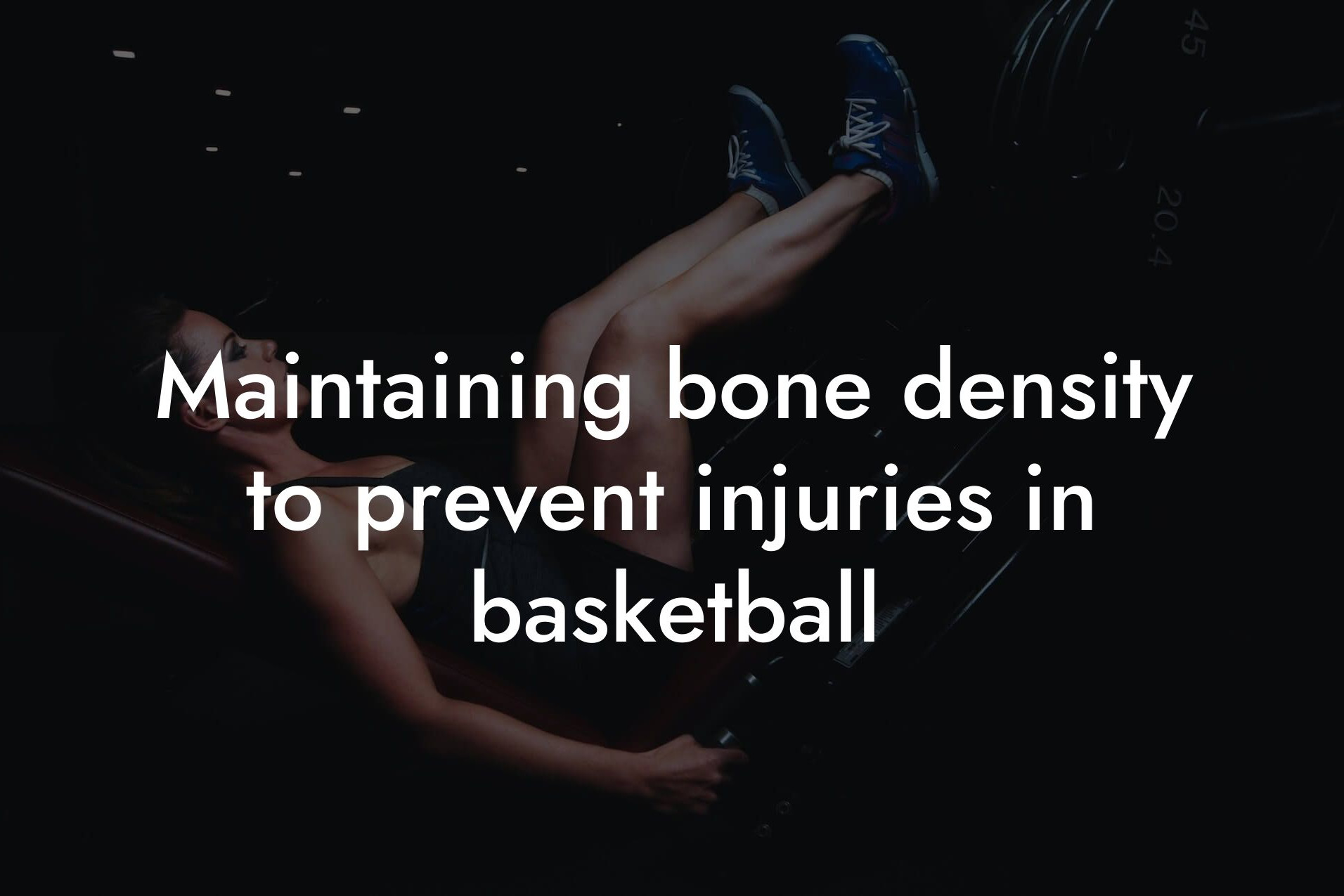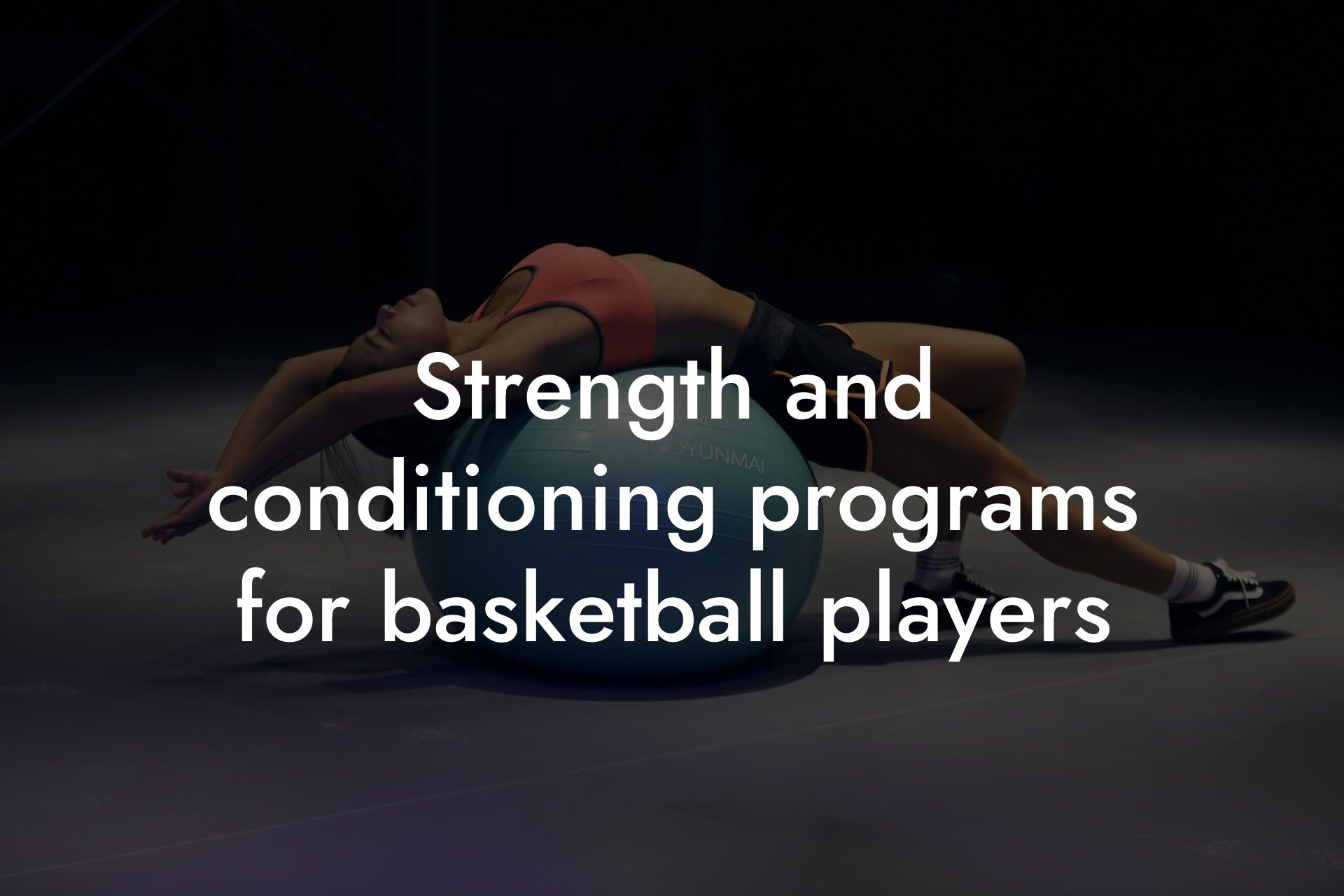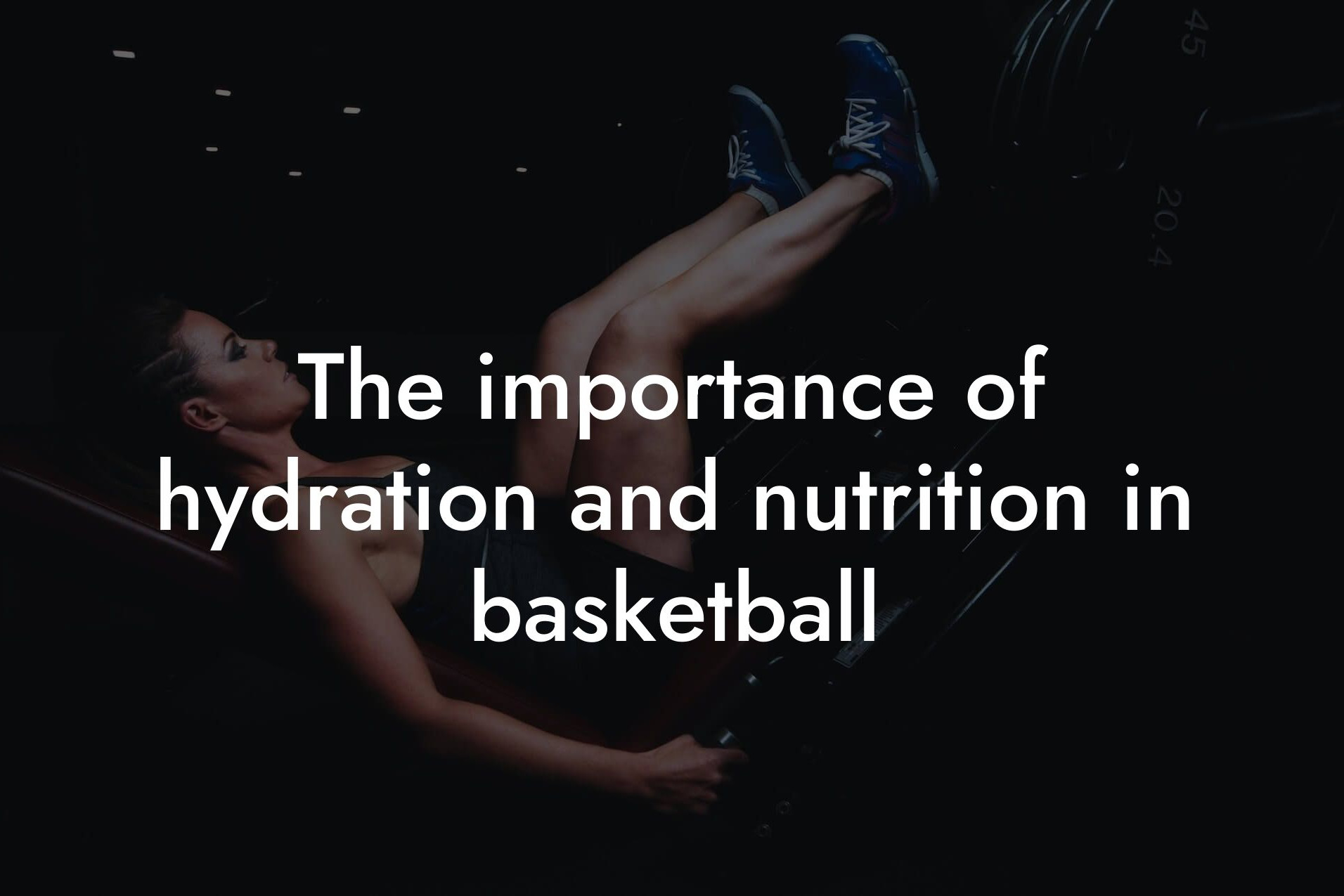Understanding the Demands of Basketball
Basketball is a high-intensity sport that requires a unique combination of strength, power, speed, agility, and endurance. A typical basketball game involves short bursts of high-intensity effort, followed by brief periods of rest. This stop-and-go nature of the game demands a high level of cardiovascular fitness, muscular endurance, and anaerobic capacity. As a basketball player, it's essential to understand the physical demands of the game to develop an effective training program that targets your specific needs.
Table of Contents
Building a Strong Aerobic Base
A strong aerobic base is the foundation of endurance. It's essential to develop your cardiovascular system to efficiently deliver oxygen and nutrients to your muscles during prolonged periods of exercise. A well-structured aerobic training program should include a combination of low-to-moderate intensity cardio exercises, such as jogging, cycling, or swimming, performed for 20-30 minutes, 3-4 times a week. This type of training will improve your body's ability to utilize fat as a fuel source, increase your lactate threshold, and enhance your overall cardiovascular fitness.
Incorporating High-Intensity Interval Training (HIIT)
HIIT is a time-efficient and effective way to improve your anaerobic capacity, speed, and agility. This type of training involves short bursts of high-intensity exercise, followed by brief periods of rest. For basketball players, HIIT can be modified to mimic the stop-and-go nature of the game. Examples of HIIT workouts for basketball players include:
- Sprints: 20-30 seconds of all-out effort, followed by 1-2 minutes of rest
- Pro Agility Shuttle: 3-5 sets of 10-15 reps, with 1-2 minutes of rest between sets
- Box Jumps: 3-5 sets of 10-15 reps, with 1-2 minutes of rest between sets
Strengthening Your Core and Glutes
A strong core and glutes are essential for basketball players. These muscle groups provide stability, power, and endurance during explosive movements, such as jumping and cutting. A well-structured strength training program should include exercises that target your core and glutes, such as:
- Planks: 3-5 sets, holding for 30-60 seconds
- Russian twists: 3-5 sets of 10-15 reps
- Squats: 3-5 sets of 10-15 reps
- Lunges: 3-5 sets of 10-15 reps (per leg)
Flexibility and Mobility
Flexibility and mobility are critical components of endurance. Basketball players require a high range of motion in their hips, knees, and ankles to perform explosive movements and change direction quickly. A well-structured flexibility and mobility program should include exercises such as:
- Leg swings: 3-5 sets of 10-15 reps
- Hip circles: 3-5 sets of 10-15 reps
- Calf raises: 3-5 sets of 10-15 reps
- Foam rolling and self-myofascial release: 3-5 sets of 10-15 reps
Nutrition and Hydration
Proper nutrition and hydration are essential for optimal endurance. Basketball players require a balanced diet that includes complex carbohydrates, lean protein, and healthy fats. Additionally, it's crucial to stay hydrated by drinking plenty of water throughout the day. Aim to consume:
- 2-3 grams of complex carbohydrates per kilogram of body weight
- 1.2-1.6 grams of lean protein per kilogram of body weight
- 0.5-1 gram of healthy fats per kilogram of body weight
- At least 8-10 glasses of water per day
Rest and Recovery
Rest and recovery are critical components of endurance. Basketball players require adequate rest and recovery to allow their bodies to repair and adapt to the physical demands of the game. Aim to get:
- 7-9 hours of sleep per night
- 1-2 rest days per week
- Active recovery techniques, such as foam rolling, stretching, and self-myofascial release
Monitoring Progress and Avoiding Burnout
Monitoring progress and avoiding burnout are essential for optimal endurance. Basketball players should regularly track their training, nutrition, and recovery to ensure they're making progress towards their goals. Additionally, it's crucial to listen to your body and take rest days as needed to avoid burnout and prevent overtraining. Use tools such as:
- Training logs to track workouts and progress
- Heart rate monitors to track intensity and recovery
- Body fat percentage measurements to track body composition
At Tano Performance Group, we understand the importance of optimizing endurance for long basketball seasons. Our DEXA machine provides a complete body assessment, giving you the information you need to take your game to the next level. By incorporating these training principles and monitoring your progress, you'll be well on your way to achieving optimal endurance and dominating on the court.
Frequently Asked Questions
What is endurance training and why is it important for basketball players?
Endurance training is a type of exercise that improves an individual's ability to sustain a high level of intensity over a prolonged period. For basketball players, endurance training is crucial as it enables them to maintain their performance throughout the game, especially during the final quarters when fatigue sets in. A well-structured endurance training program can help basketball players increase their stamina, speed, and agility, ultimately leading to better overall performance.
How can I improve my cardiovascular endurance for basketball?
To improve cardiovascular endurance for basketball, you can incorporate exercises such as jogging, cycling, or swimming into your training routine. High-Intensity Interval Training (HIIT) is also an effective way to improve cardiovascular endurance, as it involves short bursts of high-intensity exercise followed by brief periods of rest. Additionally, incorporating strength training exercises that target your legs, core, and glutes can also help improve your cardiovascular endurance.
What is the importance of strength training for endurance in basketball?
Strength training is essential for endurance in basketball as it helps improve muscle power, speed, and agility. By building strength in your legs, core, and glutes, you can increase your explosiveness and endurance, enabling you to sustain a high level of intensity throughout the game. Furthermore, strength training can also help reduce the risk of injuries, which is critical for basketball players who are prone to injuries due to the high-impact nature of the sport.
How can I incorporate strength training into my basketball training program?
To incorporate strength training into your basketball training program, start by identifying the specific muscle groups that are essential for basketball performance, such as your legs, core, and glutes. Then, create a strength training program that targets these muscle groups, including exercises such as squats, lunges, deadlifts, and leg press. Aim to do strength training exercises 2-3 times a week, with at least one day of rest in between.
What is the role of nutrition in optimizing endurance for basketball?
Nutrition plays a critical role in optimizing endurance for basketball. A well-balanced diet that includes complex carbohydrates, lean protein, and healthy fats can help provide energy for your workouts and support muscle recovery. Additionally, staying hydrated by drinking plenty of water is essential for maintaining endurance during games and practices. Aim to fuel your body with a balanced meal or snack 1-2 hours before exercise, and refuel with a post-workout meal or snack within 30-60 minutes after exercise.
How can I stay hydrated during basketball games and practices?
To stay hydrated during basketball games and practices, aim to drink at least 8-10 glasses of water per day. Additionally, make sure to drink water or a sports drink during games and practices to replenish lost electrolytes and fluids. You can also monitor your urine output to ensure you're staying hydrated – if your urine is dark yellow or you're not urinating frequently enough, it may be a sign that you need to drink more water.
What is the importance of rest and recovery in optimizing endurance for basketball?
Rest and recovery are critical components of optimizing endurance for basketball. During rest and recovery, your body repairs and rebuilds muscle tissue, replenishes energy stores, and adapts to the demands of exercise. Without adequate rest and recovery, you may experience fatigue, decreased performance, and increased risk of injury. Aim to get at least 7-9 hours of sleep per night and take rest days as needed to allow your body to recover.
How can I incorporate rest and recovery into my basketball training program?
To incorporate rest and recovery into your basketball training program, start by scheduling rest days into your training calendar. This can include active recovery techniques such as light stretching, foam rolling, or yoga, as well as passive recovery techniques such as getting a massage or taking a nap. Additionally, prioritize sleep and aim to get at least 7-9 hours of sleep per night to help your body recover from the physical demands of basketball.
What are some common mistakes basketball players make when it comes to endurance training?
Some common mistakes basketball players make when it comes to endurance training include not incorporating strength training into their program, not allowing for adequate rest and recovery, and not fueling their body with a balanced diet. Additionally, some basketball players may focus too much on cardiovascular endurance and neglect to train other essential components of endurance, such as muscular endurance and anaerobic endurance.
How can I avoid burnout and overtraining during the basketball season?
To avoid burnout and overtraining during the basketball season, prioritize rest and recovery, and make sure to schedule rest days into your training calendar. Additionally, monitor your body's response to training and adjust your intensity and volume accordingly. If you're feeling fatigued or experiencing decreased performance, it may be a sign that you need to take a step back and allow your body to recover.
What is the role of mental preparation in optimizing endurance for basketball?
Mental preparation plays a critical role in optimizing endurance for basketball. By developing a strong mental game, you can push through fatigue and maintain a high level of intensity throughout the game. Techniques such as visualization, positive self-talk, and mindfulness can help improve mental toughness and endurance.
How can I incorporate mental preparation into my basketball training program?
To incorporate mental preparation into your basketball training program, start by identifying your strengths and weaknesses, and develop strategies to improve your mental game. This can include visualization exercises, positive self-talk, and mindfulness techniques. Additionally, work with a sports psychologist or mental performance coach to develop a customized mental preparation program.
What are some common myths about endurance training for basketball?
Some common myths about endurance training for basketball include the idea that endurance training is only for distance runners, or that it's not important for basketball players who are already in good shape. Additionally, some basketball players may believe that endurance training will make them slower or less explosive, when in fact, it can actually improve their overall performance.
How can I measure my endurance progress during the basketball season?
To measure your endurance progress during the basketball season, track your performance metrics such as your heart rate, speed, and agility. Additionally, monitor your body's response to training, including your fatigue levels, sleep quality, and nutrition. You can also work with a coach or trainer to develop a customized endurance training program and track your progress.
What is the importance of flexibility and mobility in optimizing endurance for basketball?
Flexibility and mobility are essential components of optimizing endurance for basketball. By improving your flexibility and mobility, you can increase your range of motion, reduce your risk of injury, and improve your overall performance. Incorporate stretching and mobility exercises into your training program, such as leg swings, lunges, and hip circles.
How can I incorporate flexibility and mobility exercises into my basketball training program?
To incorporate flexibility and mobility exercises into your basketball training program, start by identifying areas of tightness or restriction, such as your hips, legs, and lower back. Then, develop a stretching and mobility program that targets these areas, including exercises such as leg swings, lunges, and hip circles. Aim to do flexibility and mobility exercises 2-3 times a week, with at least one day of rest in between.
What is the role of anaerobic endurance in basketball performance?
Anaerobic endurance is the ability to sustain high-intensity exercise without oxygen, and is essential for basketball performance. By improving your anaerobic endurance, you can increase your speed, power, and agility, enabling you to perform at a high level during games and practices.
How can I improve my anaerobic endurance for basketball?
To improve your anaerobic endurance for basketball, incorporate high-intensity interval training (HIIT) into your training program. This can include exercises such as sprints, shuttle runs, and box jumps, as well as strength training exercises that target your legs, core, and glutes. Aim to do HIIT exercises 2-3 times a week, with at least one day of rest in between.
What are some common injuries associated with endurance training for basketball?
Some common injuries associated with endurance training for basketball include shin splints, plantar fasciitis, and patellar tendinitis. These injuries can occur due to overuse, poor training techniques, or inadequate footwear. To prevent injuries, make sure to incorporate proper training techniques, wear supportive footwear, and allow for adequate rest and recovery.
How can I prevent injuries during endurance training for basketball?
To prevent injuries during endurance training for basketball, make sure to incorporate proper training techniques, wear supportive footwear, and allow for adequate rest and recovery. Additionally, listen to your body and take regular breaks to avoid overtraining. If you experience any pain or discomfort, stop training and seek medical attention.
What are some additional resources I can use to optimize my endurance for basketball?
Some additional resources you can use to optimize your endurance for basketball include working with a coach or trainer, using online training programs, and consulting with a sports dietitian or nutritionist. Additionally, you can use wearable technology such as heart rate monitors and GPS trackers to track your performance metrics and optimize your training program.
How can I stay motivated and engaged during the basketball season?
To stay motivated and engaged during the basketball season, set specific and achievable goals, both individually and as a team. Additionally, celebrate your successes and learn from your setbacks, and make sure to prioritize rest and recovery to avoid burnout. You can also work with a sports psychologist or mental performance coach to develop strategies to stay motivated and engaged.
Here are some related articles you might love...
- Maintaining bone density to prevent injuries in basketball
- Strength and conditioning programs for basketball players
- The importance of hydration and nutrition in basketball
- How body composition impacts vertical leap in basketball
- The role of DEXA scans in monitoring basketball player health
- Off-season training for professional basketball players
- The impact of muscle mass on basketball agility and speed
- Reducing body fat for optimal basketball performance
- Nutrition tips for sustaining energy during basketball games
Zak Faulkner
Zak Faulkner is a leading authority in the realm of physical health and body composition analysis, with over 15 years of experience helping professionals optimise their fitness and well-being. As one the experts behind Tano Performance Group, Zak has dedicated his career to providing in-depth, science-backed insights that empower clients to elevate their physical performance and overall health.
With extensive knowledge of DEXA technology, Zak specializes in delivering comprehensive body assessments that offer precise data on body fat, muscle mass, bone density, and overall physique. His expertise enables individuals to make informed decisions and achieve their fitness goals with accuracy and confidence. Zak’s approach is rooted in a deep understanding of human physiology, combined with a passion for helping clients unlock their full potential through personalised strategies.
Over the years, Zak has earned a reputation for his commitment to excellence, precision, and client-focused service. His guidance is trusted by top professionals who demand the best when it comes to their health. Whether advising on fitness programs, nutritional strategies, or long-term wellness plans, Zak Faulkner’s insights are a valuable resource for anyone serious about taking their health and fitness to the next level.
At Tano Performance Group, Zak continues to lead our Content Team revolutionising how professionals approach their physical health, offering unparalleled expertise that drives real results.




